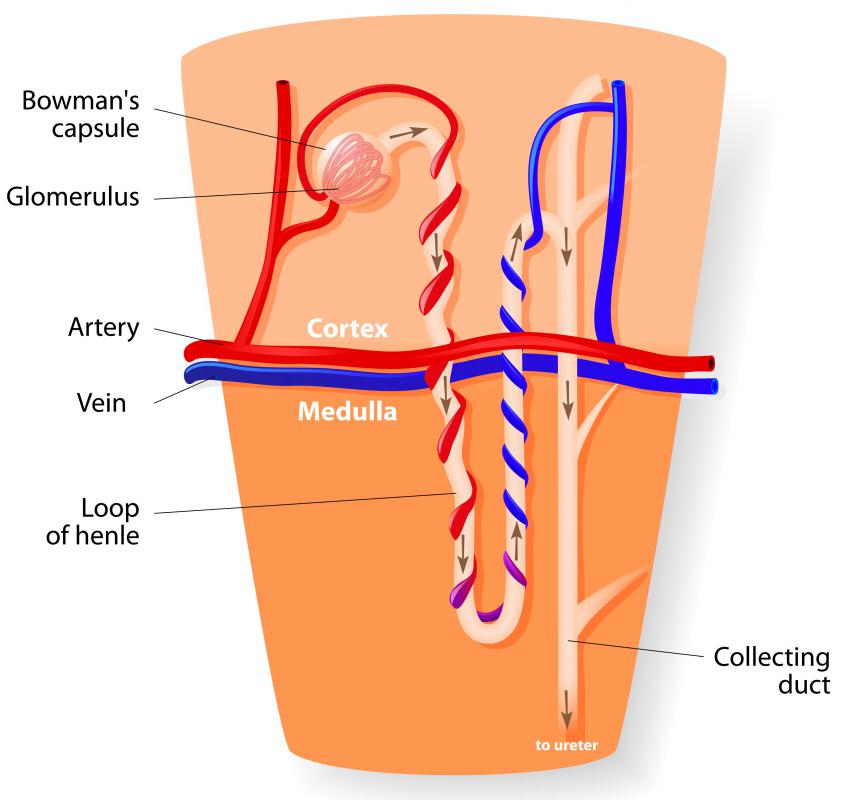At WiseGEEK, we're committed to delivering accurate, trustworthy information. Our expert-authored content is rigorously fact-checked and sourced from credible authorities. Discover how we uphold the highest standards in providing you with reliable knowledge.
What is a Tubule?
A tubule is a very small structure in the body with a cylindrical shape similar to a tube. It is generally part of a matrix of similar structures that work together to carry out a specialized body function. Tubules are located in the kidneys and other parts of the renal system, in the reproductive organs, and in many other body locations. The tubule can be almost microscopic in size, such as the minute tubes which are part of the networks in the kidneys that filter and cleanse the blood.
Tubules are often parts of glands that produce secretions within the body or upon its surface, such as the sweat glands in the skin. Glands that produce secretions are called exocrine glands, and the glandular epithelium is the part of a gland that secretes fluid or a sticky substance, which is then carried by tiny ducts out to the surface of the gland. Mucous cells in the nose secrete a sticky fluid that is carried by miniscule tubular openings to coat the membranes in this area, and salivary glands in the mouth secrete fluid through ducts to moisten areas of the mouth.

There are many types of glandular epithelia in the body, and the tubules contained within these types have been named according to their structural appearance within each type of epithelium. Some of the primary classifications include simple tubular glands; simple alveolar, or acinar, glands; simple tubular-alveolar glands; and compound tubulo-alveolar glands. The long crypts of Lieberkühn in the colon are examples of simple tubular glands, as are the sweat glands. Additionally, the major and minor salivary glands are examples of both the simple and the compound tubulo-alveolar glands. Tubule networks also exist in the male reproductive system, in the form of the seminiferous tubules, which are tiny coiled tubes within the testes that produce and store reproductive material.
The kidneys consist of some of the most intricate glandular structures in the body. Extremely tiny sets of tubules — termed nephrons — are closed at one end and serve as the basic filtration units of the kidneys; they are arranged in arrays of over one million tubules that filter the entire blood capacity of the body hundreds of times each day. Each nephron is itself highly complex and contains a miniature network of blood vessels, as well as four different anatomic regions, one of which is a structure called the proximal convoluted tubule — also known as the first convoluted tubercle. It is in this area where salt, water, and blood sugar are absorbed back into the bloodstream after circulating through the kidneys for cleansing.
AS FEATURED ON:
AS FEATURED ON:











Discuss this Article
Post your comments